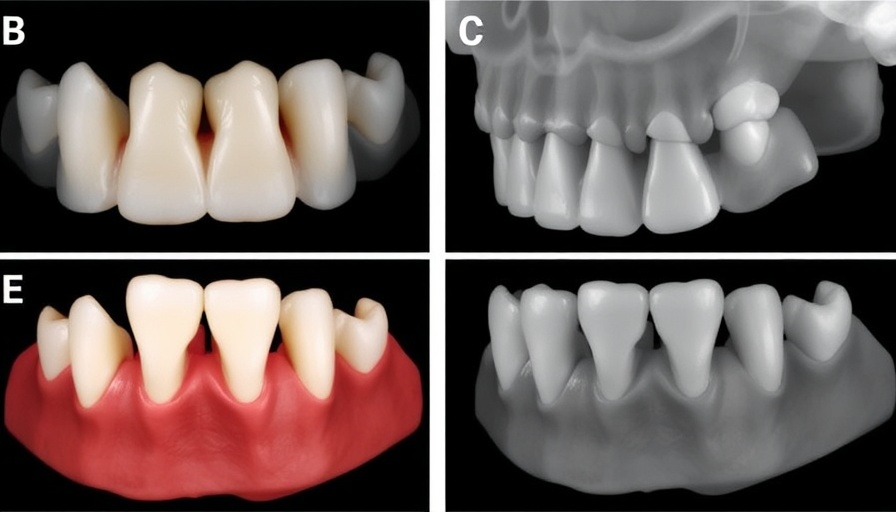
Understanding Hypodontia: The Importance of Retained Primary Molars
Hypodontia, or the congenital absence of one or more teeth, poses a unique challenge in dental restoration, particularly when considering dental implants. For individuals undergoing this condition, the role of retained primary molars can be critical. These primary teeth, specifically when they are infra-occluded (meaning they are positioned lower than their counterparts), can have significant implications for maintaining bone volume for future implant placements. Research indicates that retaining these molars can simplify the surgical process later in life, minimizing the complexities associated with grafting and bone augmentation.
Impact of Early Extraction: Why Timing Matters
One of the study's key findings revealed that early extraction of retained primary molars significantly correlates with an increased need for surgical grafting at the implant site. In fact, out of the 273 retained primary molars examined, those extracted prematurely demonstrated a marked disadvantage during subsequent implant placements. This insight emphasizes the importance of considering the timing of dental interventions to maximize positive outcomes for patients.
Bone Preservation Through Retention: A Compelling Argument
Maintaining an infra-occluded primary molar, even without a permanent successor, offers a remarkable advantage in preserving the bucco-lingual width of the jaw. This preservation is crucial, as it directly influences the foundation for dental implants, reducing the necessity for grafting procedures. The study highlights that patients who retained their primary molars exhibited better bone volume, which ultimately led to simpler and more successful implant placements. This preservation of bone not only saves patients from more invasive procedures but also contributes positively to their overall dental health.
Restoration Techniques: Enhancing Dental Health
In cases where primary molars are infra-occluded, restorative techniques can be applied. Although the research noted that the use of onlays did not significantly influence grafting requirements, it demonstrates that proactive restoration can help manage the condition of infra-occluded teeth, preventing complications like tipping and over-eruption. These techniques serve as an integral part of dental care that ensures the longevity of primary teeth, thus aiding in better future outcomes for dental implants.
Future Trends in Dental Implantology: What Lies Ahead?
The trends in dental restoration continually evolve with advancements in technology and techniques. As awareness grows regarding the significance of retaining primary molars in hypodontia patients, we may see a shift in dental practices towards early intervention and preventive measures to maintain these teeth. Future developments in implant technology may also focus on improving techniques to preserve bone volume and reduce surgical complexity for patients facing tooth loss. For patients, this means a more optimistic outlook on future dental health.
Final Thoughts and Steps to Take
For adults approaching retirement and prioritizing their dental health, the message is clear: maintaining retained infra-occluded primary molars can dramatically improve outcomes during implant procedures. Therefore, regular dental check-ups and consultations can provide the necessary oversight and proactive care needed to ensure optimal health. As we collectively move towards innovative dental practices, it is essential to stay informed and engaged in personal dental care.
Don't hesitate to discuss with your dentist the status of your retained teeth, particularly if you are facing the prospect of dental implants in the future. Your proactive steps today can lead to simplified, successful procedures down the line.
 Add Row
Add Row  Add
Add 




Write A Comment